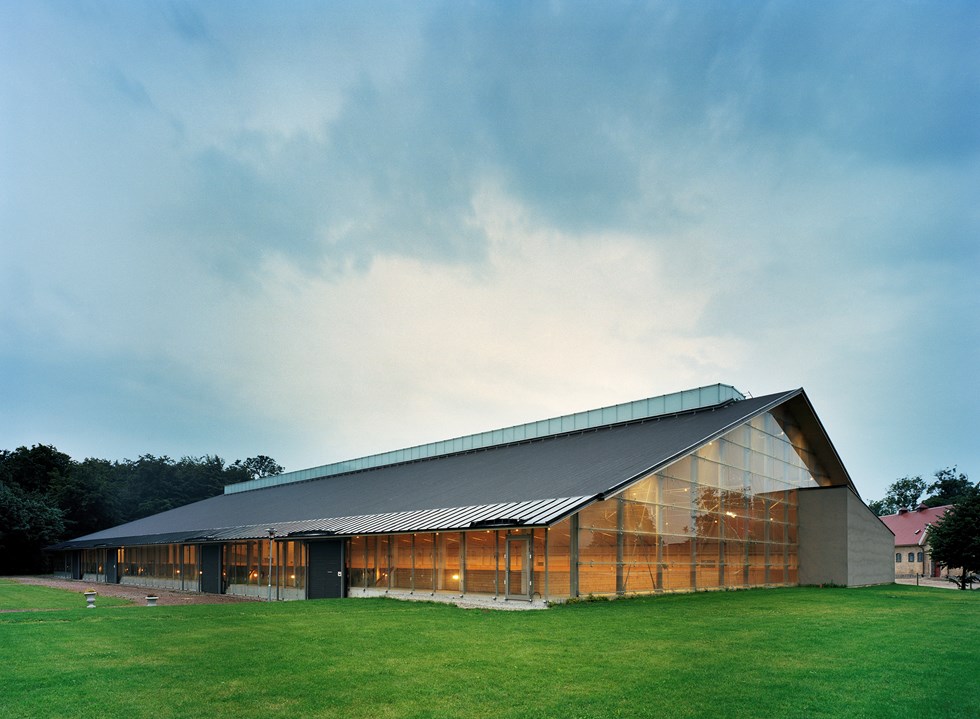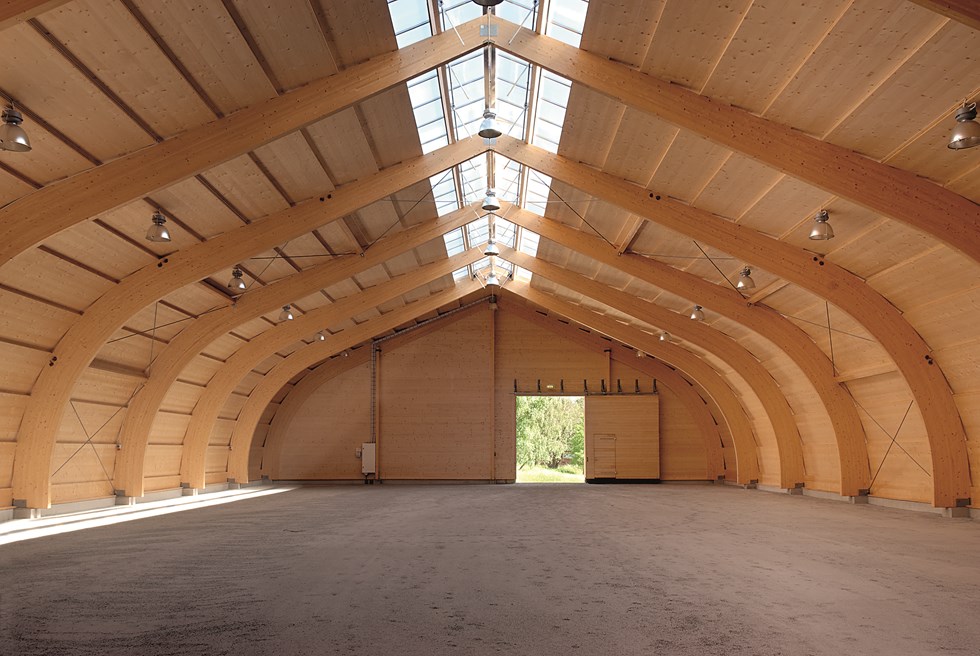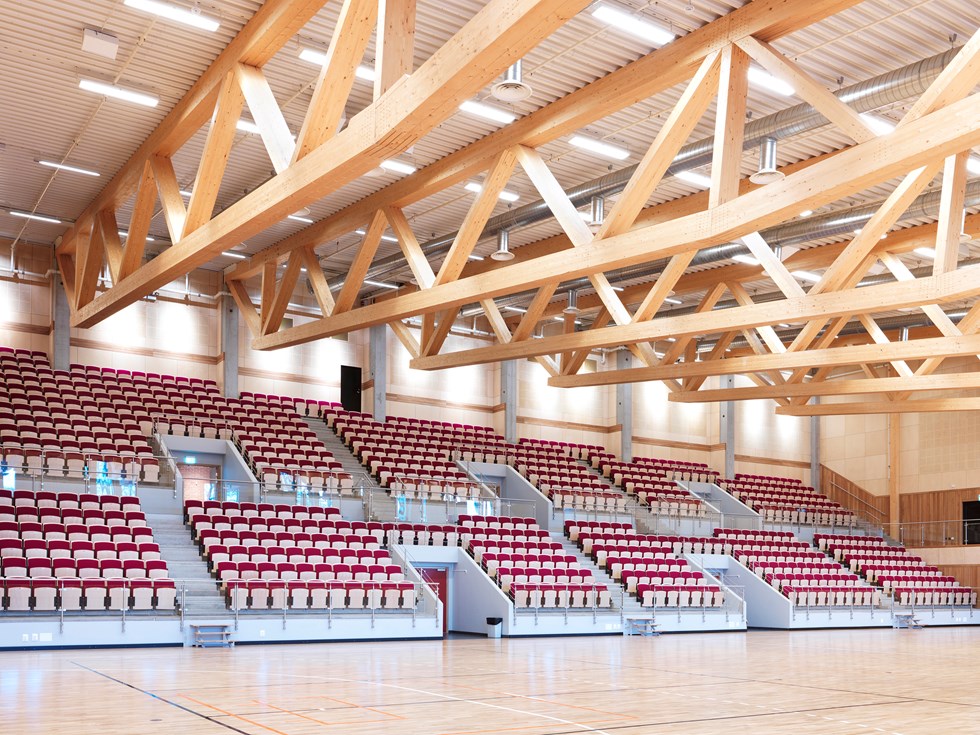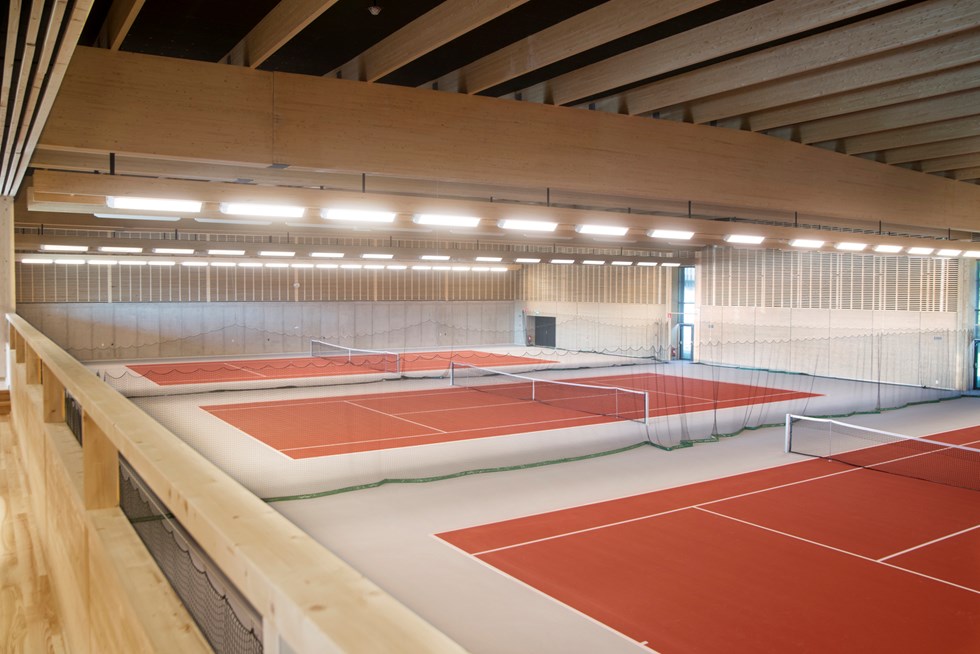Sport facilities
Wood is very strong.
A comparison with steel and concrete shows that structural timber has a strength to weight ratio 20 per cent higher than structural steel and four to five times higher than non-reinforced concrete in compression. This strength can come to good use in sports halls that often need a great roof span to accommodate different needs and activities. Wood can provide sufficient strength to the structure, even though the long beams are subject to massive pressure.
A wooden structure is flexible and allows the integration of mechanical systems such as lighting fixtures and ventilation. With hollow beams, you can place electric installations inside of them, plus you get an even lighter structure. CLT provides great design possibilities, facilitating the construction of structures with a pared-down, organic look and allowing free rein architectural creativity.
Flyinge Equestrian Arena
Flyinge Equestrian Arena is a great example of a sports facility with a very slim profile, AIX Architects designed it to fit into the historical surroundings but with a contemporary flair.

Photo Åke E:son Lindman
Rosersberg Canine Training Hall
Rosersberg Canine Training Hall is a weather shelter designed for the Swedish Police Force’s K-9 Unit. A simple, rational structure on a listed heritage site by AIX Architects.

Photo Peder Lindbom
Olsbergs Arena
Olsbergs Arena in Eksjö is a indor sports facility with seating for 1.300 spectators. The main characterists of the arena is the large timber truss beams. By A+F Arkitektkontor.

Photo Joakim Kröger
Södra Climate Arena
Södra Climate Arena in Växjö is a indoor tennis arena with a glulam post and beam structure by architect Kent Pedersen.

Photo Robin Fritzson
